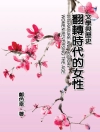The 1970s witnessed a renaissance in women’s print culture, as feminist presses and bookshops sprang up in the wake of the second-wave women’s movement. At four decades’ remove from that heady era, however, the landscape looks dramatically different, with only one press from the period still active in contemporary publishing: Virago. This engaging history explains how, from modest beginnings, Virago managed to weather epochal transformations in gender politics, literary culture, and the book publishing business. Drawing on original interviews with many of the press’s principal figures, it gives a compelling account of Virago’s place in recent women’s history while also reflecting on the fraught relationship between activism and commerce.
Tabella dei contenuti
Acknowledgements
Introduction
PART I: 1973-1983
Chapter 1. Virago’s Hands-on Brand of Feminism
Chapter 2. Changing the Literary Landscape
PART II: 1983-1994
Chapter 3. ‘Alternative, Autonomous, and Viable’: Feminist Publishing and the Mainstream
Chapter 4. Fragmenting Feminism and Diversifying Women’s Writing
PART III: 1994-2004
Chapter 5. Working Women and the Changing Face(s) of the Book Industry
Chapter 6. Third Waves and Disconnections
PART IV: 2004-2017
Chapter 7. Virago’s Place in the New Millennium’s Literary Marketplace
Chapter 8. Twenty-First Century Feminism(s) and Virago’s Role for Women’s Writing
Conclusion
Bibliography
Index
Circa l’autore
Catherine Riley received her doctorate from Birkbeck College. Her research focuses on trends in gender theory and praxis, particularly as it applies to publishing and social change.












